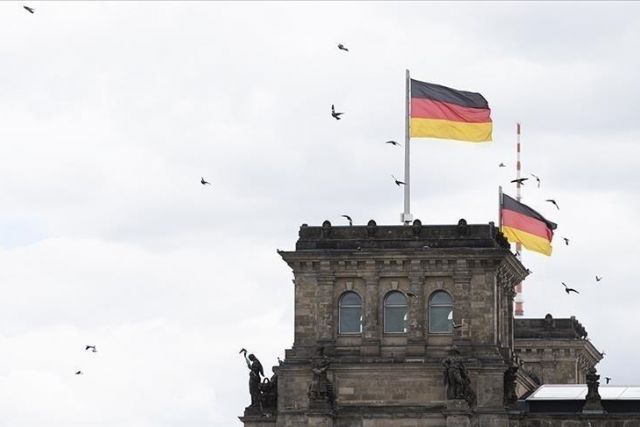Architect traces Ottoman works converted into churches
Master architect Yilmaz says 329 Ottoman works turned into churches and bell towers across Europe

ISTANBUL
Searching and traveling across the lands that constituted the Ottoman Empire, a master architect traced Turkish buildings in 18 countries and found at least 329 of them turned into churches or bell towers.
Speaking to Anadolu Agency, Mehmet Emin Yilmaz said he traced Turkish architectural works for 10 years and identified the mosques, Islamic monasteries and shrines that are turned into bell towers.
Starting at the Balkans initially, Yilmaz said: "I first concentrated on Hungary, Bulgaria and Greece. Because most of the buildings converted into churches are in these three countries."

"Later, I identified 329 Turkish architectural buildings such as mosques, small mosques, Islamic monasteries, shrines that were converted into churches at various times in a total of 18 countries including Algeria, Ukraine, Crimea, Georgia, Armenia, Bosnia and Herzegovina, Cyprus, Croatia, Kosovo, Macedonia, Moldova, Romania, Serbia and Turkey," he added.
Giving a country-wise breakdown, he said: "A total of 117 mosques, seven Islamic monasteries and shrines and a madrasah (Islamic school) were converted into churches and three clock towers into bell towers in Bulgaria; in Croatia eight mosques and a [historic] tower into churches; in Crimea six mosques, a shrine into churches; in Kosovo a mosque into a church and a clock tower into a bell tower.
"In Ukraine two mosques were turned into a church and a minaret into a bell tower; in Macedonia three mosques, two shrines and two clock towers into churches; in Serbia 15 mosques and two shrines into churches; in Georgia and Azerbaijan a mosque form each were turned into churches during the Russian invasion; three mosques in Bosnia and Herzegovina were turned into churches during the Australian invasion."
Yilmaz further said: "Three mosques in Algeria were turned into churches during the French invasion, two mosques in Armenia into churches. In South Cyprus a fountain, in Moldova four mosques and in Romania five mosques were all turned into churches."
"In Hungary 23 mosques, five shrines, a bathhouse and a school were turned into churches, however Hungarians are the only nation in Europe who did not convert any Turkish architecture into churches. All of the conversion of churches was done during the Australian invasion," he added.
Greece stands out
Yilmaz said Greece has the most Turkish architecture that is "still in use" and added that the country converted 76 mosques, 19 shrines and a minaret into churches.
In addition, Greece also converted five minarets into bell towers, changing 101 architectural works.

Yilmaz said the Turkish architectural works were converted over political and spatial reasons and added: "Large monumental Turkish buildings and especially minarets in the city centers are seen as the first target to be destroyed due its symbolism of Turkish domination and Islam. It is deeply saddening that in only one night in Sofia in 1878, seven minarets were destroyed with dynamites."
"Mosques are the most converted architectures into churches. I have identified 272 mosques and masjids. Aside from the mosques, 36 monasteries and shrines are turned into churches. There are clock towers turned into bell towers and minarets that bells were mounted on," he said.
A tower in Croatia, a reservoir of a fountain in Southern Cyprus, a prayer area in Greece was converted into Orthodox worship areas, Yilmaz added.
"A church was built inside a caravansary in Serbia. So it is not only mosques but also monasteries, shrines, minarets, towers, bathhouses, fountains and workhouses belonging to Turkish architecture that were turned into churches," he said.
Destruction
Yilmaz noted that components such as the domes and arches reflecting Turkish architecture were purposely destroyed and the architecture of those buildings altered.
"However, no matter how much they alter it the main walls, in which we call them main outer wall, face the qibla [direction toward Mecca] and cannot be changed, thus allowing us to identify the converted mosques. I was able to identify the Mustafa Pasha Mosque in Budapest this way," he said.

Yilmaz stressed that there is no other nation that respects architectural works more than the Turkish nation, and said: "Turks were never hung-up on old civilizations and that is why we never intervened to the architectural components of those works that were turned into mosques. The best example to this is the Hagia Sophia Mosque."
"We have doted upon it [Hagia Sophia] since 1453, without interfering with the church features. We only added mihrab, minbar [Islamic pulpil] and minaret. When you look at it from outside, you can easily understand that it was once a church... However, the architectural features of the mosques that Europeans turned into churches have completely been changed."
He stated that his goal in this archive research was to register the Turkish works with documents.
Yilmaz, who has been researching Turkish architectural works for nearly 20 years, has been involved in many restoration projects at home and abroad.
He established the Turkish Architectural Research Center. The book from his research between 2010-2020, Turkish Works Converted Into Churches will soon be published.
*Writing by Merve Aydogan in Ankara





